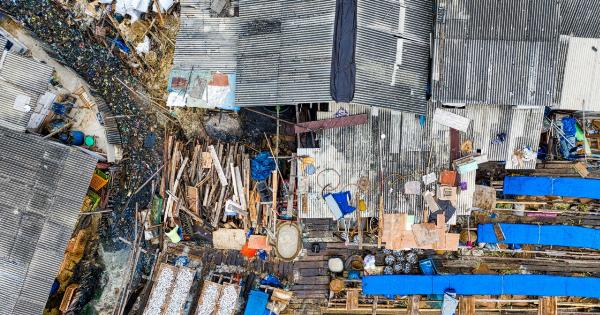Rhinoplasty, commonly referred to as a nose job, is a surgical procedure that aims to enhance the appearance and proportion of the nose, as well as improve its functionality.
It is one of the most popular cosmetic surgeries across the globe, with thousands of individuals opting for this transformative procedure each year.
Reasons for Rhinoplasty
People opt for rhinoplasty for various reasons, including:.
-
Improving the overall appearance of the nose.
-
Reshaping a nose that has been damaged due to injury or trauma.
-
Correcting a deviated septum, which can cause breathing difficulties.
-
Alleviating snoring or sleep apnea issues.
-
Boosting self-confidence and self-esteem.
The Rhinoplasty Procedure
The rhinoplasty procedure typically involves the following steps:.
-
Anesthesia: The patient is administered either local or general anesthesia, depending on the complexity of the surgery and the patient’s preferences.
-
Incisions: The surgeon makes discreet incisions either inside the nostrils or across the columella, the narrow strip of tissue that separates the nostrils. This ensures minimal scarring.
-
Reshaping the nose: The surgeon then reshapes the bone, cartilage, and tissues of the nose to achieve the desired aesthetic and functional outcome. Changes may involve removing or adding tissue, as well as repositioning the structures of the nose.
-
Closing incisions: Once the desired changes are made, the incisions are meticulously closed with dissolvable sutures.
-
Recovery: The patient is provided with post-operative instructions and usually requires some downtime to facilitate proper healing.
Candidates for Rhinoplasty
Rhinoplasty is a highly individualized procedure, and it’s essential for patients to have realistic expectations. Ideal candidates for rhinoplasty include individuals who:.
-
Are in good overall health.
-
Have fully developed facial growth (typically around the age of 16).
-
Are dissatisfied with the shape, size, or functionality of their nose.
-
Have a positive outlook and realistic expectations.
-
Do not smoke.
Benefits of Rhinoplasty
Rhinoplasty offers a multitude of benefits, both cosmetic and functional. Some key advantages include:.
-
Improved facial harmony: A well-proportioned nose can greatly enhance overall facial aesthetics, bringing balance to other facial features such as the eyes, lips, and chin.
-
Enhanced self-confidence: Correcting features that have long been the source of insecurity can dramatically boost self-esteem and confidence levels.
-
Better breathing: Rhinoplasty can address structural issues within the nose, such as a deviated septum, that may impede proper airflow and lead to breathing difficulties.
-
Rectifying nasal trauma: People who have suffered nasal injuries or trauma can benefit from rhinoplasty to restore the nose’s shape, functionality, and aesthetics.
-
Correcting congenital issues: Rhinoplasty can address nose irregularities that are present from birth, helping individuals feel more comfortable and satisfied with their appearance.
Risks and Recovery
As with any surgical procedure, rhinoplasty carries some risks. These can include:.
-
Infection.
-
Bleeding.
-
Adverse reaction to anesthesia.
-
Asymmetry.
-
Scarring.
-
Poor wound healing.
-
Loss of smell.
Recovery from rhinoplasty typically takes several weeks, and patients should follow their surgeon’s post-operative care instructions diligently.
This may include keeping the head elevated, avoiding strenuous activities, and taking prescribed medications to aid healing and manage any discomfort.
Choosing a Skilled Surgeon
To ensure a successful rhinoplasty and achieve desired results, it’s crucial to select a skilled and experienced plastic surgeon. Consider these factors when choosing a surgeon:.
-
Board certification: Ensure the surgeon is certified by a recognized board.
-
Experience: Inquire about the surgeon’s experience specifically in performing rhinoplasty procedures.
-
Before and after photos: Review the surgeon’s portfolio of past patients to assess their abilities and see if their aesthetic matches your goals.
-
Patient testimonials: Read reviews and testimonials from previous patients to gauge patient satisfaction.
-
Open communication: Choose a surgeon who listens to your concerns, answers all your questions, and helps set realistic expectations.
Cost of Rhinoplasty
The cost of rhinoplasty can vary depending on various factors, including the surgeon’s expertise, the location of the clinic, the complexity of the procedure, and any additional procedures required.
Typically, the cost includes the surgeon’s fee, anesthesia fees, facility fees, and post-operative care costs. It’s important to discuss the cost and payment options with your chosen surgeon during the initial consultation.
Final Thoughts
Rhinoplasty is a transformative procedure that can significantly enhance the appearance, proportion, and functionality of the nose.
Whether it is to correct structural issues, improve self-confidence, or achieve a more harmonious facial appearance, rhinoplasty has the power to positively impact a person’s life. If you are considering rhinoplasty, consult with a qualified plastic surgeon who can guide you through the process and help you achieve the nose you desire.




























